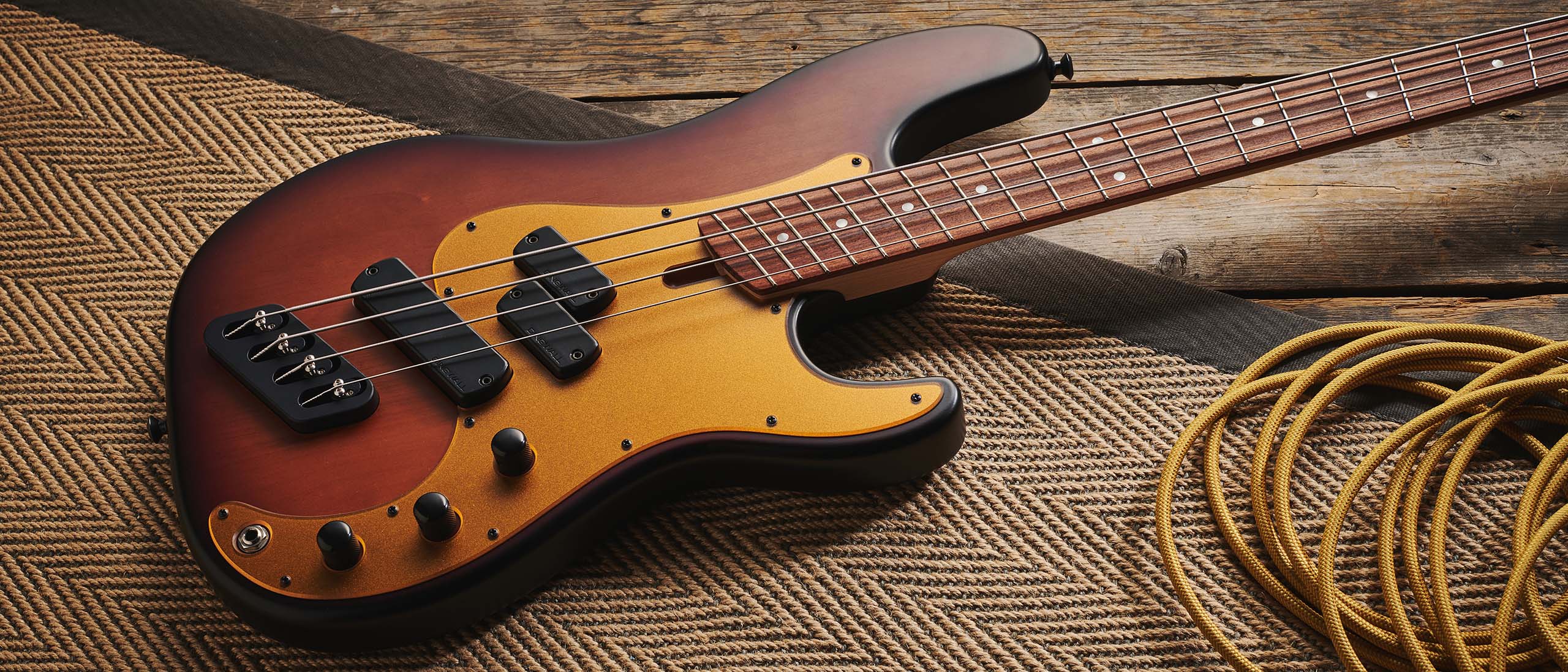Guitar World Verdict
The SP1 seems tailor-made to win over those previously unfamiliar or skeptical when it comes to fanned fret instruments. It offers a suite of classic sounds and natural playability, wrapped up in a cool-looking and superbly built package. It's not cheap, but Dingwall could well have a hit on its hands here.
Pros
- +
A thoughtful modern take on the classic P-bass blueprint.
- +
Superb build quality.
- +
Fantastic playability – don't be scared of those fanned frets!
Cons
- -
Unmarked pickup selector makes it hard to tell which setting is being used.
You can trust Guitar World
What is it?
Sheldon Dingwall didn’t set up shop specifically to make bass guitars for the metal crowd – they found him.
Though Dingwall instruments have been seen in the hands of notable bassists across multiple different styles of music, to many the company is best-known for the NG series, developed with star producer and musician Adam ‘Nolly’ Getgood.
Not only some of the most distinctive, purpose-built rock and metal bass guitars available, but also relatively accessible. Nolly’s instruments form a core part of Dingwall’s Ready To Play range - in other words, non-custom basses resulting from ‘hybrid manufacturing’ processes in both the Far East and at Dingwall’s Canadian headquarters.
Now, though, Dingwall has expanded that range with something a little more… universal. The Super P isn’t new - it’s been in the custom line-up for over a decade now - but this iteration, the SP1, is the first time it has been available as a series production model, and comes with either four or five strings.
What’s ‘Super’ about it compared to a regular P-style bass, then? Well, the headline is that, as with all Dingwalls, it’s a fanned fret bass. To the uninitiated, that means every string has a different scale length, the lower strings being longer and the higher strings shorter, so the frets appear to ‘fan out’.

In theory, every string on the bass is under the correct tension, resulting in a clearer-sounding, more consistent-feeling instrument.
This is what makes the company’s metal-oriented five and six-string models so popular – low notes are tighter and clearer than you’ll find almost anywhere else. Now to see how that philosophy can benefit players seeking something more traditional…
All the latest guitar news, interviews, lessons, reviews, deals and more, direct to your inbox!
Specs
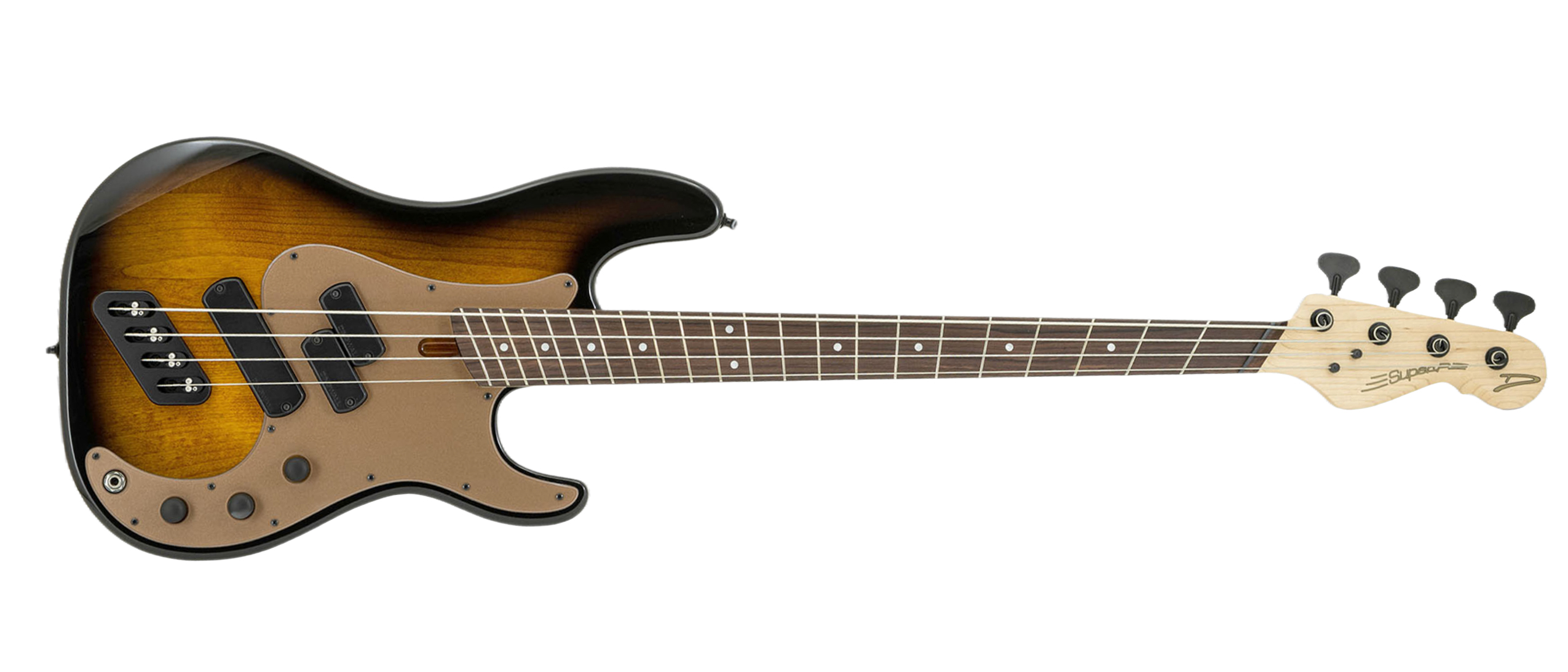
- Launch price: $2,499/£2,199/€2,449
- Made: Indonesia/Canada
- Type: Four-string multi-scale bass guitar
- Body: Alder
- Neck: Maple, elliptical profile
- Fingerboard: Rosewood
- Scale length: 32"-34.25"/813mm-870mm
- Nut/width: GraphTech Black TUSQ/42mm
- Frets: 22, banjo-sized, nickel silver
- Hardware: Satin black, Dingwall Minimalist bridge, Dingwall open gear tuners
- String spacing at bridge: 19mm
- Electrics: Passive, alnico, Dingwall Dual P split-coil and FD3n soapbar. Volume, Tone, Quad-Tone 4-way rotary pickup selector
- Weight: 7.3lb/3.3kg
- Options: Four and five-string versions available
- Left-handed options: None
- Finishes: Gloss Vintageburst (as reviewed), gloss Metallic Black, gloss Dark Candy Green (all with Matte Coco Gold scratchplate), matte Ducati Pearl White (with Matte Pablo custom-designed scratchplate)
- Case: Dingwall padded gig bag included
- Contact: Dingwall Guitars
Build quality
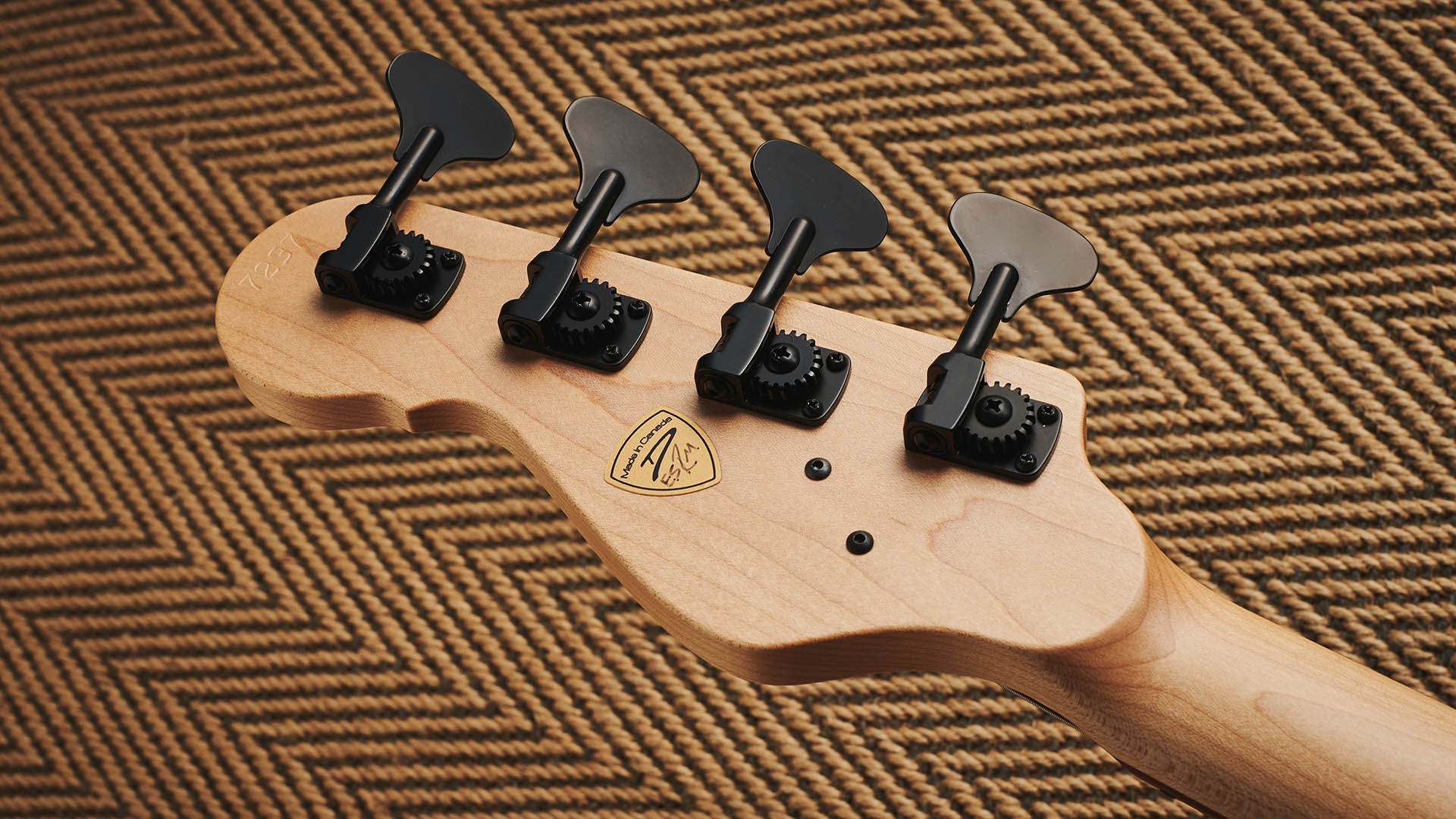
Build quality rating: ★★★★★
Taking the SP1 out of its excellent Dingwall gigbag, there’s an immediate impression of high quality. The alder body, slightly slimmed-down from a traditional P-bass, sits on the low side of medium weight. The satin sunburst finish on this prototype sample (production models will be gloss) is silky and flawlessly applied.
Meanwhile, the neck profile is comfortable and reasonably slim - possibly helpful in mitigating the shock of the new for those unfamiliar with multi-scale instruments.
Speaking of which, those all-important fanned frets (cut from tiny banjo fretwire) are installed to perfection on the light rosewood fretboard, and the good-looking satin black hardware is pleasingly solid too. This example also bears a rather stylish matte gold scratchplate.
Playability

Playability rating: ★★★★½
You may be surprised how slight the learning curve is with a multi-scale instrument, especially one built to these exacting standards
All this would be wasted if the SP1 didn’t play well, since this bass is clearly aimed at converting those with more classic tastes to the fanned-fret cause – it needs to be easy to pick up and get comfortable with straight away, otherwise it’ll be a much harder sell to newcomers.
Luckily, it is – you may be surprised how slight the learning curve is with a multi-scale instrument, especially one built to these exacting standards. After only a few minutes, I think most players will be acclimatised - and possibly wondering why it’s taken so long to try one out.
Here, the scale ranges from a medium-length 32” on top, to a slightly longer-than-standard 34.25” on the bottom string. Compared to a standard-scale bass, the even string tension makes for a slinky and comfortable playing experience with superb consistency.
Sounds

Sounds rating: ★★★★☆
Between the volume and tone controls, the SP1 boasts a four-way rotary pickup selector offering the Dual-P split-coil by itself, the two pickups in parallel, then in series, and then just the FD3n soapbar at the bridge. Plenty of sounds, then, but the core P-style bass tone is there – full of chewy low mids and rich bass frequencies, no doubt helped by the multi-scale tension.
The parallel sound offers a slightly scooped grunt that Jazz Bass players will likely get on well with, while the series setting is louder and more forthright as expected. The soapbar back pickup is a useful modern addition, clear and punchy with a mid-forward character.

The SP1’s sonic range works well with either retro or modern clean amp settings, while dialling in some grit provides nice harder-edged rock sounds, whether played fingerstyle or with a pick.
The only gripe is that the selector knob is unmarked – you have to train your ears to know which setting you’ve got.
Verdict
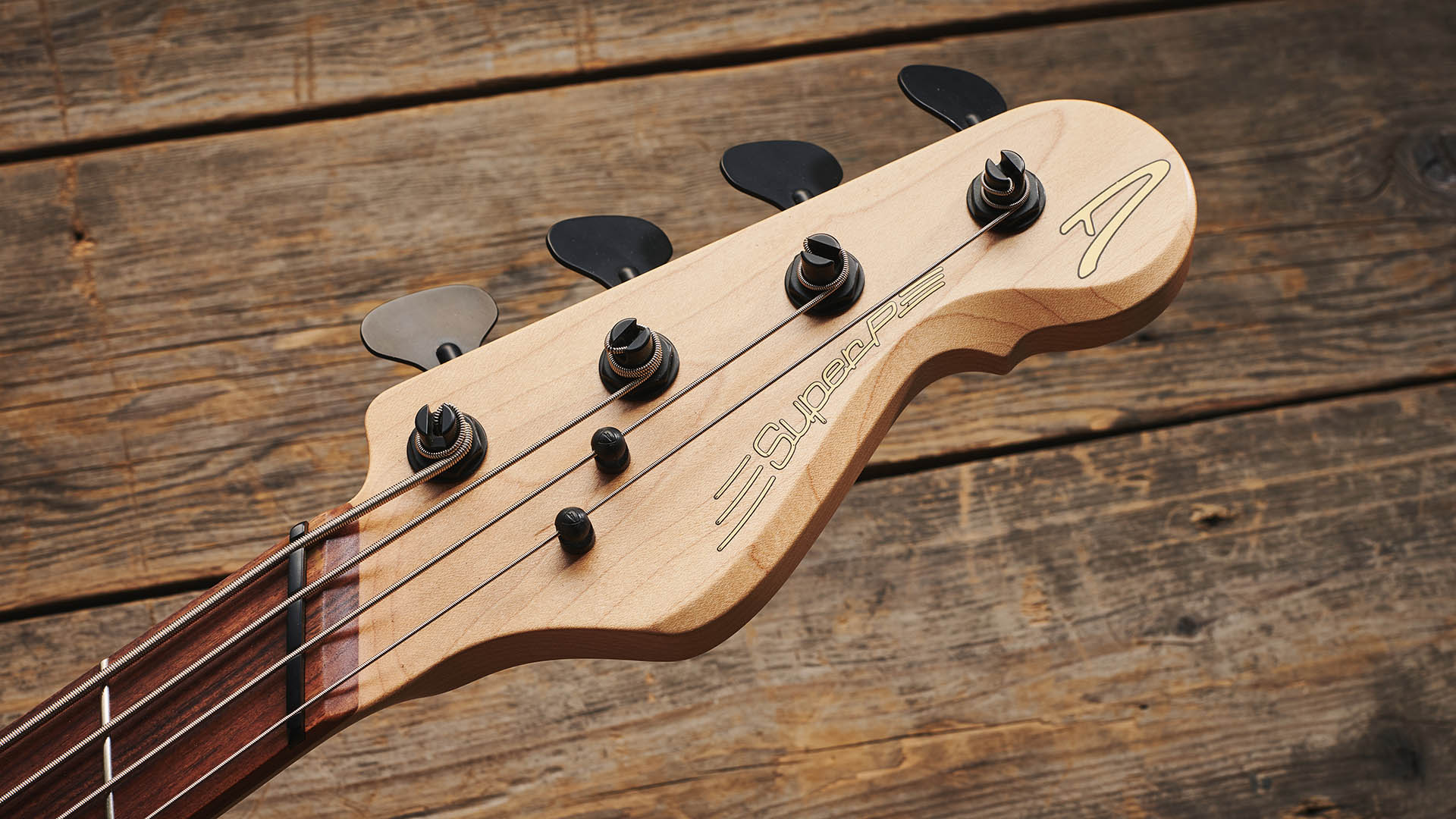
Could this Dingwall convert newcomers to fanned frets? Well, why not?
The price is far from entry-level, but the quality is delightful, and the care taken in its design shines through
The SP1 has a fine range of sounds that cover a variety of traditional and modern bass tones, and its feel would put any player at ease, whether they're a seasoned multi-scale connoisseur or have never set eyes on one before.
The price is far from entry-level, but the quality is delightful, and the care taken in its design shines through.
Guitar World verdict: The SP1 seems tailor-made to win over those previously unfamiliar or skeptical when it comes to fanned fret instruments. It offers a suite of classic sounds and natural playability, wrapped up in a cool-looking and superbly built package. It's not cheap, but Dingwall could well have a hit on its hands here.
Test | Results | Score |
|---|---|---|
Build quality | Weighing comfortably under 8lbs, impeccably put together, it's impossible to fault Dingwall's attention to detail and craft. | ★★★★★ |
Playability | If the idea of a multi-scale bass gives you the heebie-jeebies, you owe to yourself to give this a go. It's a very playable – and persuasive – instrument. | ★★★★½ |
Sounds | My issues with the selector knob notwithstanding, you have got a superb range of tones to work with. | ★★★★☆ |
Overall | A pro-quality serious four-string that offers an accessible entry point to the world of multi-scale bass. | ★★★★½ |
Also try

Dingwall NG2 – $2,480/£2,199/€2,499 street
The aforementioned model designed with Adam 'Nolly' Getgood as a specialised rock and metal tool, with a powerful Darkglass EQ.
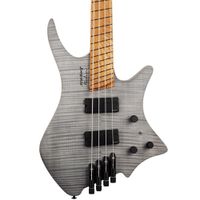
Strandberg Boden Bass Standard 4 – $2,395/£2,399/€2,579
Designed to be the ultimate in ergonomics, feather-light with a similar scale to the SP1, and headless too.
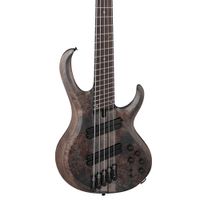
Ibanez BTB705LM – $1,299/£999/€1,049
A cheaper entry point into multi-scale, this 5-string has a milder 34-35" scale fan and an accomplished neck-through build.
Hands-on videos
Dingwall Guitars
Nate Navarro
Philipp Rehm
You must confirm your public display name before commenting
Please logout and then login again, you will then be prompted to enter your display name.
